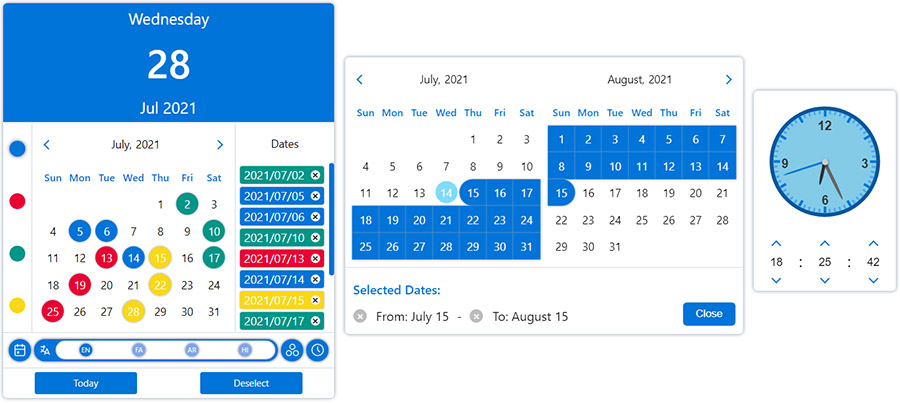

If you want to keep all the styling of a particular React-Bootstrap component but switch theĬomponent that is finally rendered (whether it's a different React-Bootstrap component, aĭifferent custom component, or a different HTML tag) you can use the as prop to do so. With certain React-Bootstrap components, you may want to modify the component or HTML tag * The following line can be included in a src/App.scss import "custom" Advanced usage #įor more advanced use cases and details about customizing stylesheets. ) /* import bootstrap to set changes import "~bootstrap/scss/bootstrap" $theme -colors : ( "info" : tomato, "danger" : teal You can create a custom Sass file: /* The following block can be included in a custom.scss */ /* make the customizations */ If you wish to customize the Bootstrap theme or any Bootstrap variables * The following line can be included in a src/App.scss import "~bootstrap/scss/bootstrap" /* The following line can be included in your src/index.js or App.js file */ import './App.scss' Customize Bootstrap #

The bundler of your choice to compile Sass/SCSS stylesheets to CSS. This applies to a typical create-react-app application in other use cases you might have to setup In your main Sass file and then require it on your src/index.js or App.js file. In case you are using Sass the simplest way is to include the Bootstrap’s source Sass files

More information about the benefits of using a CDN can be found Simplest way is to include the latest styles from the CDN. How and which Bootstrap styles you include is up to you, but the Load the common scripts that are used by the KendoReact components including prop-types, kendo-drawing, and kendo-licensing. Follow the steps from the described approach in the official React documentation. import Button from 'react-bootstrap/Button' // or less ideally import import 'bootstrap/dist/css/' You can use KendoReact components in React applications by loading them directly from script files.
UNPKG REACT CODE
React-bootstrap/Button rather than the entire library.ĭoing so pulls in only the specific components that you use, whichĬan significantly reduce the amount of code you end up sending to You should import individual components like:
UNPKG REACT INSTALL
npm install react -bootstrap bootstrap Importing Components # To use a CDN for the stylesheet, it may be helpful to If you plan on customizing the Bootstrap Sass files, or don't want You can install with npm (or yarn if you prefer). The simplest way to avoid this problem is to avoid mutating values that you are using as props or state.The best way to consume React-Bootstrap is via the npm package which
UNPKG REACT UPDATE
The ListOfWords will thus not update even though it has new words that should be rendered. Since this code mutates the words array in the handleClick method of WordAdder, the old and new values of will compare as equal, even though the actual words in the array have changed. The problem is that PureComponent will do a simple comparison between the old and new values of. If your project is built with Create React App, run:Ĭonst TerserPlugin = require ( 'terser-webpack-plugin' ) You can find instructions for building your app for production below. It is expected that you use the development mode when working on your app, and the production mode when deploying your app to the users. If you visit a site with React in development mode, the icon will have a red background: If you visit a site with React in production mode, the icon will have a dark background: If you aren’t sure whether your build process is set up correctly, you can check it by installing React Developer Tools for Chrome. However, they make React larger and slower so you should make sure to use the production version when you deploy the app. These warnings are very useful in development. If you’re benchmarking or experiencing performance problems in your React apps, make sure you’re testing with the minified production build.īy default, React includes many helpful warnings. Now, you can start adding Syncfusion React UI components in the application. Step 3: Map the Syncfusion React packages in the configuration file as follows. Step 2: Install your required npm packages.

Nevertheless, there are several ways you can speed up your React application. Step 1: For setup project locally, read topic Setup for Local Development. For many applications, using React will lead to a fast user interface without doing much work to specifically optimize for performance. Internally, React uses several clever techniques to minimize the number of costly DOM operations required to update the UI.


 0 kommentar(er)
0 kommentar(er)
